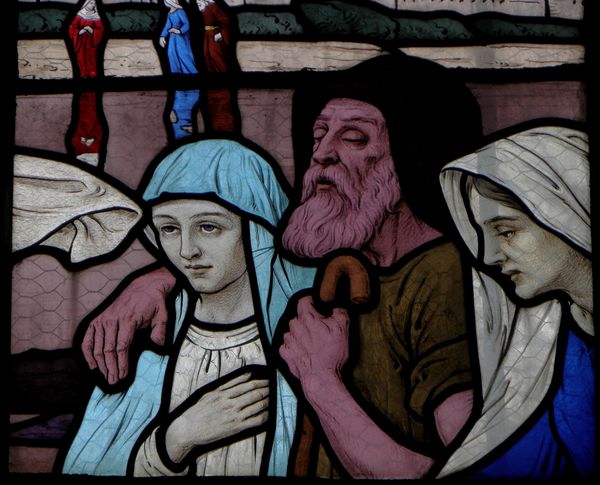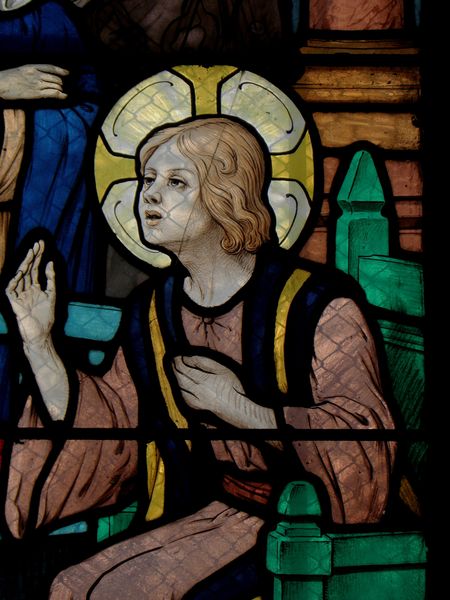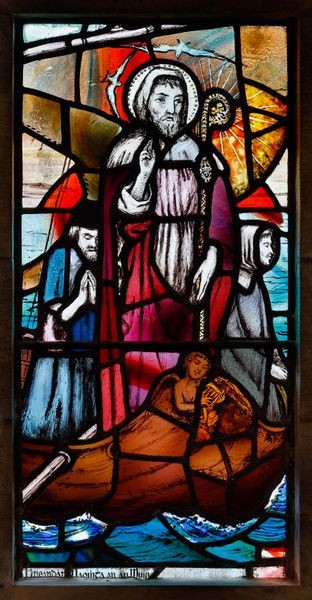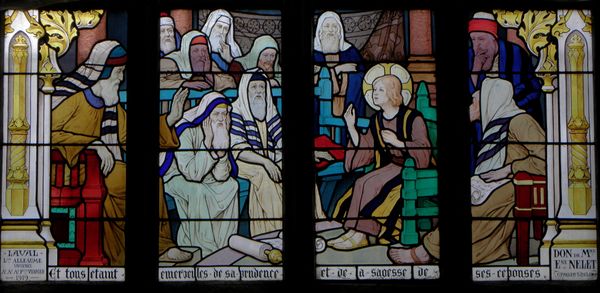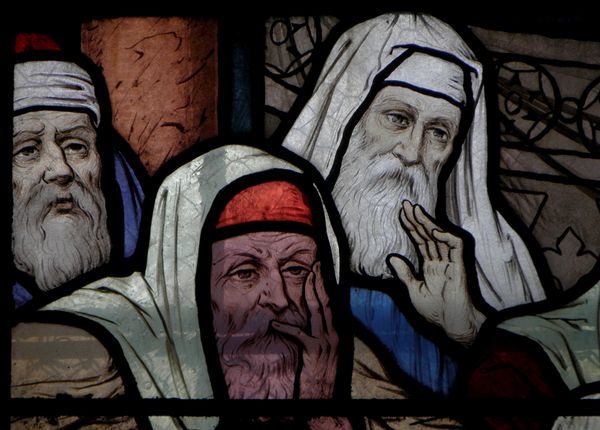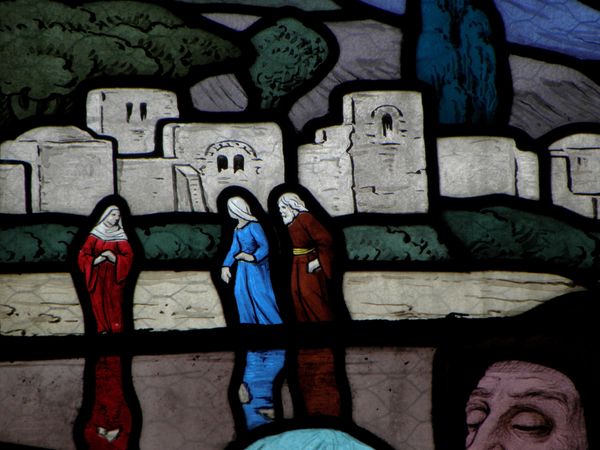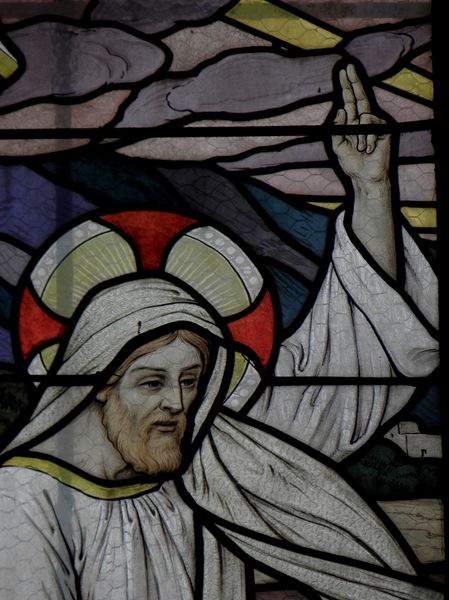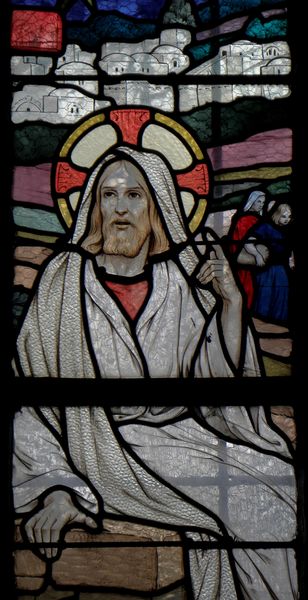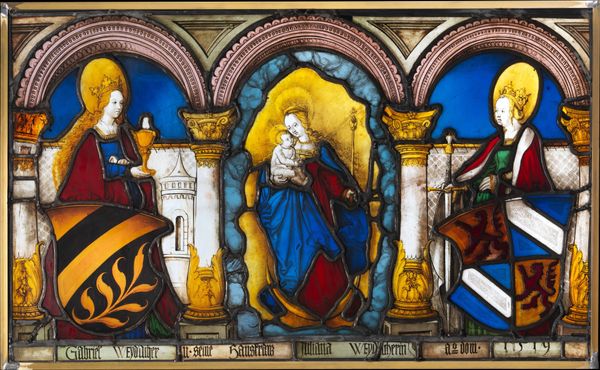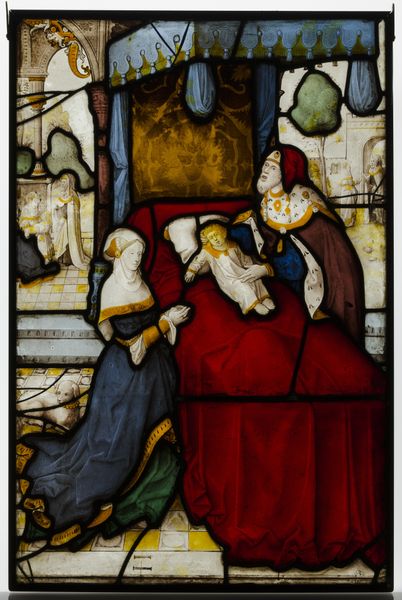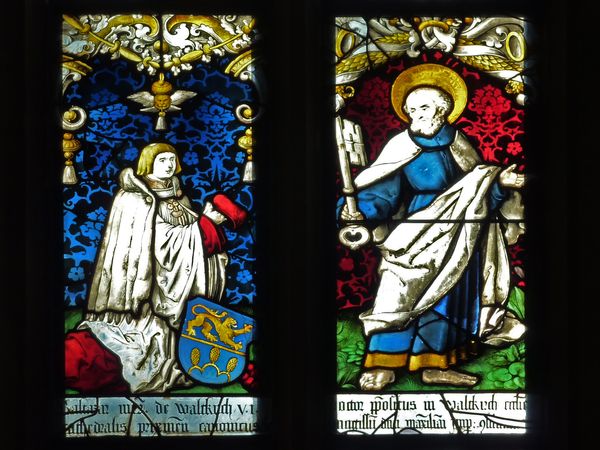
Jesus and the Samaritan woman. Eglise Saint-Sulpice de Fougères (detail) 1919
0:00
0:00
stain, painting, glass
#
public art
#
medieval
#
stain
#
narrative-art
#
painting
#
figuration
#
mural art
#
glass
#
historical building
Copyright: Public domain
Editor: Here we have Ludovic Alleaume's stained glass piece from 1919, depicting "Jesus and the Samaritan Woman." It's striking how medieval it feels despite being created in the 20th century. What strikes you most about this piece? Curator: Given the historical context, its early 20th-century creation date is actually quite telling. The revival of medieval styles, especially in church art post-World War I, served to recall a sense of order and faith amidst chaos and widespread trauma. Notice the idealized figures. Why do you think Alleaume chose stained glass to depict this biblical scene? Editor: I suppose stained glass has always been associated with religious spaces, which reinforces the narrative's sacredness and perhaps creates a specific spiritual experience for the viewer within the church. Is that accurate? Curator: Precisely! Think about how stained glass transforms light. It's not merely illustrative; it's experiential. The coloured light would have significantly impacted the perception and emotional resonance of the story within the Église Saint-Sulpice de Fougères. Also, consider the societal role of women at the time, and the story depicted; this would also reflect societal values. Editor: It's interesting how the medium and style choices emphasize both the timelessness of the biblical narrative and the specific cultural needs of the time it was created. Thanks for that insight! Curator: My pleasure. It is key to look beyond the surface aesthetic of an artwork and understand its function within a broader historical and societal framework.
Comments
No comments
Be the first to comment and join the conversation on the ultimate creative platform.
